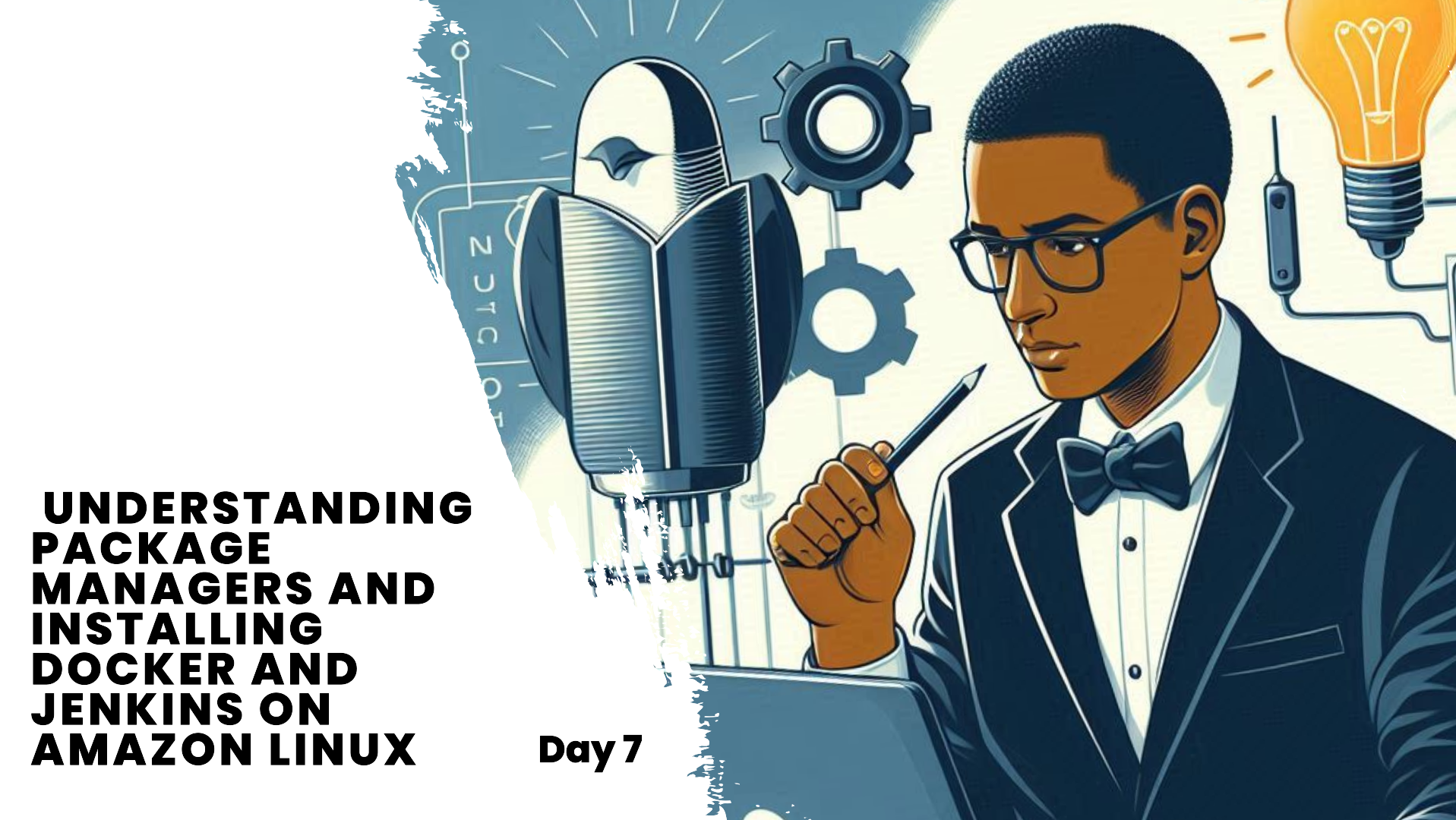Understanding Package Managers and Installing Docker and Jenkins on Amazon Linux
 Muzammil Jan
Muzammil Jan
What is a package manager in Linux?
A package manager in Linux is a tool that automates the process of installing, updating, configuring, and removing software packages from a computer's operating system.
What is a package?
A package is a compressed archive that contains all the files and metadata needed to install, run, and manage a piece of software.
Examples of Package Managers in Linux
APT (Advanced Package Tool): Used by Debian-based distributions like Ubuntu.
Yum/DNF: Used by Red Hat-based distributions like Fedora and CentOS.
Pacman: Used by Arch Linux.
Zypper: Used by openSUSE.
Snap: A newer, universal package manager developed by Canonical for Ubuntu but available for other distributions as well.
Each package manager has its own command syntax and repository management system but they all serve the same basic purpose of managing software on a Linux system.
What is systemctl and systemd?
systemctl and systemd are components of modern Linux operating systems primarily used for managing system services and the boot process.
systemctl
systemctl is the command-line tool used to interact with systemd. It provides various commands to manage and control the services and the system state.
systemd
systemd is a system and service manager for Linux operating systems. It is designed to provide a suite of tools and daemons for managing system functions, and it serves as a replacement for the traditional System V init system.
Installing Docker and Jenkins on a Linux system using yum Package Manager
As I'm performing this exercise on Amazon Linux, the default software package management tool is YUM. You can use any package manager from the list above depending on your Linux distribution.
Run the command sudo su to switch to the root user (superuser) in a terminal session. This command is often used by system administrators to perform tasks that require elevated privileges.
sudo su
Part 1: Install Docker
Step 1: Update Your System
Ensure your package index is up to date.
sudo yum update -y
Step 2: Install Docker
Install Docker using yum.
sudo yum install docker -y
Step 3: Check Docker Status
Check the status of the Docker service.
sudo systemctl status docker
Step 4: Start Docker
Start the Docker service.
sudo systemctl start docker
Step 5: Enable Docker to Start at Boot
Ensure Docker starts automatically when the system boots.
sudo systemctl enable docker
Step 6: Verify Docker Installation
Check the Docker version to verify that Docker is installed correctly.
docker --version
Part 2: Install Jenkins
Step 1: Install Amazon Corretto 11 (or a suitable version)
For Amazon Linux 2, you should use Amazon Corretto as it’s the recommended version of Java. Here’s how to install it:
sudo yum install -y java-11-amazon-corretto-devel
Step 2: Verify Java Installation
Verify that Java is installed correctly.
java --version
Step 3: Add the Jenkins Repository
Add the Jenkins repository using the following command:
sudo wget -O /etc/yum.repos.d/jenkins.repo \
https://pkg.jenkins.io/redhat-stable/jenkins.repo
Step 4: Import the GPG Key
Import the key file from Jenkins-CI to enable installation from the package:
sudo rpm --import https://pkg.jenkins.io/redhat-stable/jenkins.io-2023.key
Step 5: Upgrade Packages
Upgrade all packages to make sure everything is up-to-date.
sudo yum upgrade
Step 6: Install Jenkins
Install Jenkins using yum.
sudo yum install jenkins
Step 7: Start Jenkins as a Service
Start the Jenkins service.
systemctl start jenkins
Step 8: Check the Status of the Jenkins Service
Check the status of the Jenkins service.
systemctl status jenkins
Step 9: Enable Jenkins to Start at Boot
Ensure Jenkins starts automatically when the system boots.
systemctl enable jenkins
Subscribe to my newsletter
Read articles from Muzammil Jan directly inside your inbox. Subscribe to the newsletter, and don't miss out.
Written by

Muzammil Jan
Muzammil Jan
Software Engineering student at Dha Suffa University, Karachi. Exploring the world of DevOps & Cloud! Love learning & giving back to open source communities. Connect with me on https://www.linkedin.com/in/muzammiljan/











